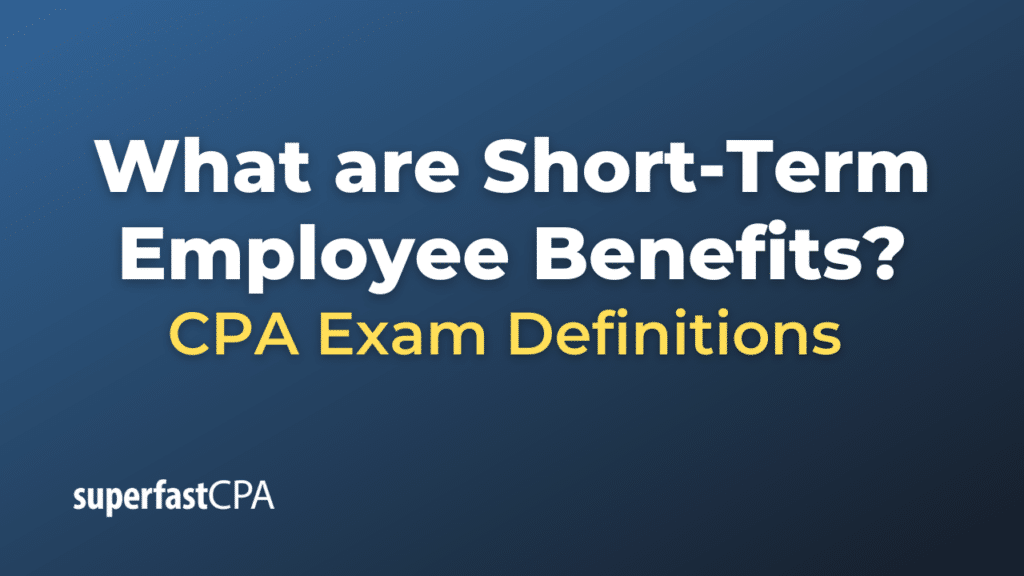Short-Term Employee Benefits
Short-term employee benefits are forms of compensation provided by an employer to its employees and are expected to be settled within twelve months after the end of the period in which the employees render the related service. These benefits are crucial for employee motivation, retention, and immediate well-being, and they are an essential part of the total compensation package offered by employers.
Examples of short-term employee benefits include:
- Wages and Salaries: This is the regular compensation paid to employees for their services, typically provided as hourly wages or monthly/annual salaries.
- Paid Annual Leave: Salaries paid to employees during their vacation or annual leave.
- Paid Sick Leave: Compensation given to employees when they are unable to work due to illness.
- Bonuses: Additional payments made to employees, typically as a reward for good performance, reaching targets, or other milestones.
- Profit-sharing: Payments made to employees based on the company’s profits, distributing a portion of the earnings back to the employees.
- Non-monetary Benefits: Such as free meals, company cars for personal use, or housing provided to employees.
- Medical and Dental Care: Benefits that cover the healthcare costs of employees, often provided through health insurance policies.
- Short-term Compensated Absences: Such as maternity or paternity leave, where employees receive payment while away from work for personal reasons.
- Social Security Contributions: Employer contributions to state or government social security, which are usually matched with employee contributions.
These short-term employee benefits are typically expensed as they accrue, with any unpaid amounts being recognized as a liability on the balance sheet. They represent a significant cost for many businesses and are crucial for maintaining a satisfied and productive workforce.
Example of Short-Term Employee Benefits
Let’s illustrate the concept of short-term employee benefits using a fictional scenario involving a company named UrbanTech Solutions:
UrbanTech Solutions – Employee Benefits Overview
For the Year Ending December 31, 2023
- Wages and Salaries:
- UrbanTech Solutions employs 50 people with an average annual salary of $60,000 each.
- Total expenditure: $3,000,000
- Paid Annual Leave:
- Each employee gets 20 days of paid annual leave. If an employee doesn’t use their leave days, they get paid out at the end of the year. 10 employees decided to cash out their leave.
- Total expenditure: $46,154 (calculation: 10 employees * 20 days * ($60,000/365 days))
- Paid Sick Leave:
- Throughout the year, employees took a total of 100 sick days. UrbanTech Solutions paid their regular salaries during these days.
- Total expenditure: $164,384 (calculation: 100 days * 50 employees * ($60,000/365 days))
- Bonuses:
- UrbanTech Solutions awarded bonuses for exceptional performance. 20 employees received an average bonus of $5,000.
- Total expenditure: $100,000
- Profit-sharing:
- The company had a good year and decided to distribute 2% of its $2 million profits among its employees.
- Total expenditure: $40,000
- Non-monetary Benefits:
- 5 senior employees are given company cars valued at an average of $20,000 per year for personal use.
- Total expenditure (in kind): $100,000
- Medical and Dental Care:
- UrbanTech Solutions has a health insurance plan that costs $500 per employee annually.
- Total expenditure: $25,000
- Short-term Compensated Absences:
- 3 employees went on maternity/paternity leave this year, with UrbanTech Solutions compensating their full salaries for 3 months each.
- Total expenditure: $45,000 (calculation: 3 employees * 3 months * ($60,000/12 months))
TOTAL SHORT-TERM EMPLOYEE BENEFITS EXPENDITURE: $3,420,538
From this example:
- UrbanTech Solutions spent a total of $3,420,538 on short-term employee benefits in 2023. This expenditure provides employees with compensation and benefits that encourage loyalty, boost morale, and help to attract talent.
This overview gives a snapshot of the various components that can make up short-term employee benefits for a company. The amounts and types of benefits will vary widely based on the industry, location, company size, and company policies.













